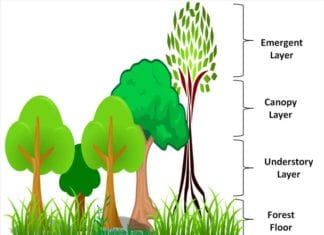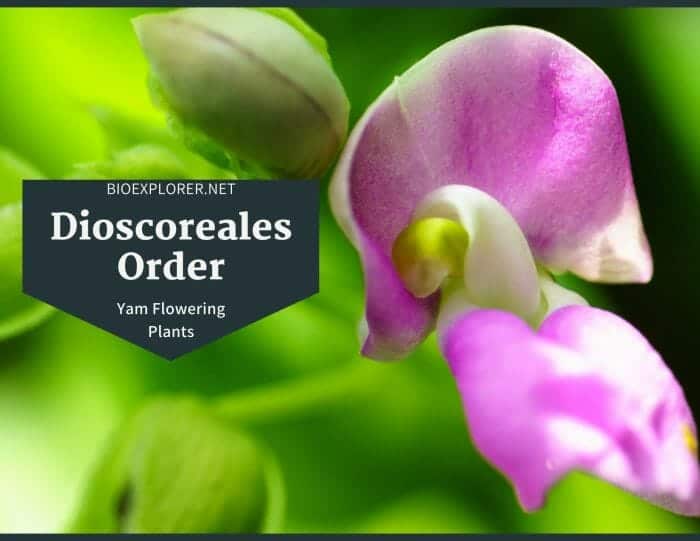
Order Dioscoreales is a family of flowering plants which most commonly include herbaceous plants. The famous yam Plant order consists of 21 genera and 900 species[1] worldwide.
They mostly contain herbaceous plants that parasite fungi and are non-photosynthetic (the bat plant). While other plants of the order contain net-veined type leaves. Some members of the plant order contain medicinal compounds (Diosgenin)[2] in the leaves, which are refined on the commercial level.
The most important plants of this plant order have massive number of medicinal and food properties[3] (Dioscorea quartiniana (Yam), Dioscorea batatas (Chinese yam), Dioscorea rotundata (White yam) and Dioscorea esculanta).
Table of Contents
Dioscoreales Pronunciation

Dioscoreales Distribution
The monocotyledonous group of flowering plants is highly distributed in tropical & temperate regions of America and some regions of Australia.
Suggested Reading:
Explore The Layers Of The Rainforest

Dioscoreales Families
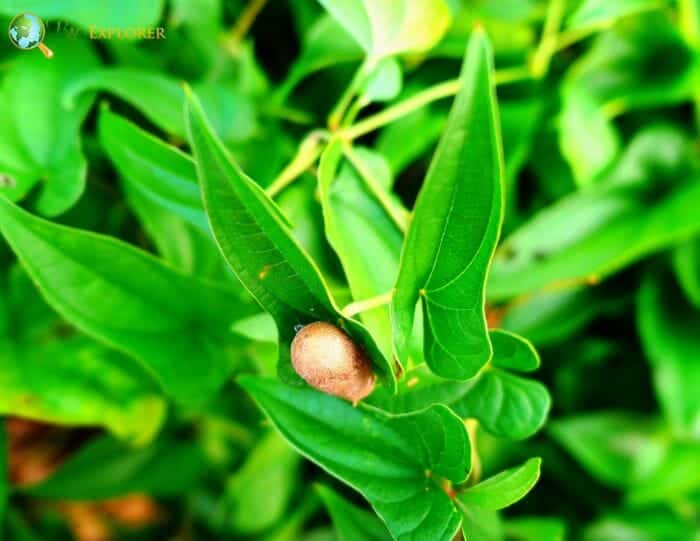
The herbaceous group of the flowering plant comprises 3-5 families[4], out of which only 3 have been recognized by the APG IV Classification system (2016). The three prominent and vital families of Dioscoreales are:
- Dioscoreaceae/Yam family
- Burmanniaceae/Blue thread
- Nartheciaceae/Colic root

Dioscoreales Characteristics
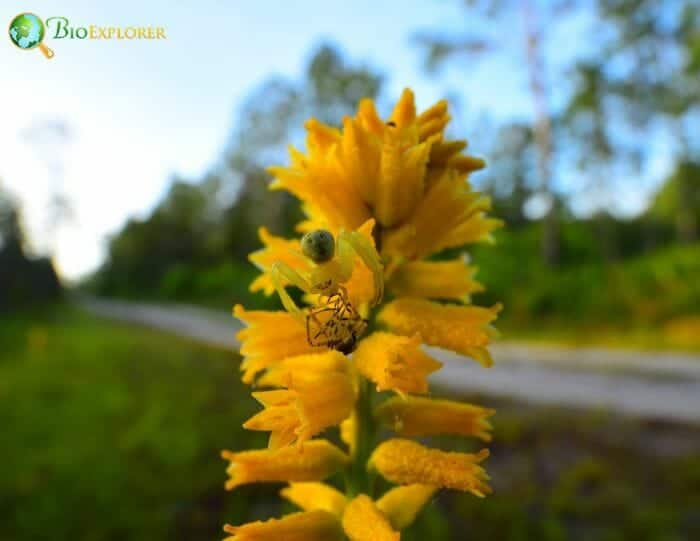
- Plant Type: Plant can be Annual, Perennial, woody vines, and small herbs.
- Roots: The root system must be adventitious, creeping, and fibrous.
- Stem: They have a green, narrow rhizomeWhat is rhizome?An underground stem, with nodes and short to elongate internodes., tuberous, and Ariel stem system.
- Leaves: Leaves vary from alternate, colorless to yellow-red spiral, opposite, and palmate type.
- Flowers and inflorescence: Flowers can be bisexual or unisexual, actinomorphic and inflorescence can be varying from bracteates with the raceme and umbel panicle type.
- Sepals and petals: Antisepalous (facing the sepals), Monadelphous (united stamens and free anthers), Free or Epitepalous (stamens attached to petals) type of sepals and petals are present.
- Stamens and Carpels: 3+3 stamens and mostly 3 carpels with the 3 locules.
- Ovary and Fruit: Ovary can be inferior, and fruit formed must be of berry and capsuled type.
- Seeds: Exalbuminous seeds are present (lacks the storage of endospermWhat is endosperm?An embryonic nutritive tissue formed during double fertilization by the fusion of a sperm with the polar nuclei. on maturation).

Advanced Characteristics of Dioscoreales
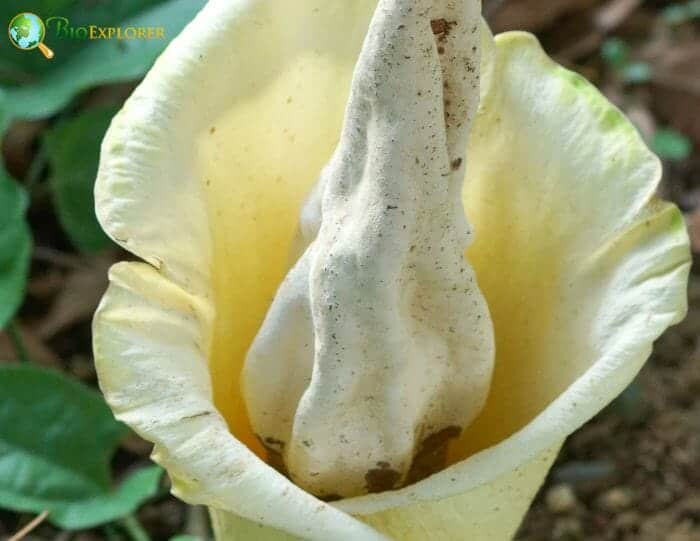
- Medicinal Applications: Most species in this order are known for their uncountable uses in medicinal purposes. For example, Dioscorea batatas (Chinese yam) are used for many pharmaceutical uses like steroid precursors, treating poor appetite, Chronic diarrhea, Asthma, and uncontrollable urination. Dioscorea quartiniana (Yam) is used for its detoxification purposes. Dioscorea doryophora is used to obtain steroids like dexamethasone and metenolone.
- Food Applications: Dioscorea quartiniana (Yam) is also a staple food in Africa. Dioscorea esculanta and Dioscorea rotundata (White yam) make edible starch and used in food industries. Dioscorea doryophora is also for food purposes.

Dioscoreales Families Characteristics
Dioscoreales contain 3-5 families, but only three families are of great importance worldwide; the remaining two have been merged into the existing three families. The characteristics of the families are as follows:

Dioscoreaceae Characteristics
The most abundant and significant family of Dioscoreales is Dioscoreaceae, commonly known as the Yam family, which consists of known 750 species and 9 genera[5] and is highly distributed in temperate and subtropical regions of Australia warm temperate regions.
Distinctive Feature: The most specific feature of Dioscoreaceae that separates them from other members of the same plant order are:
- They are hermaphrodite, dioeciousWhat is dioecious?Pertaining to plants, individuals of which bear either staminate or pistillate flowers, but not both., rhizomatousWhat is rhizomatous?Bearing rhizomes. Rhizome is an underground stem, with nodes and short to elongate internodes., or tuberous; leaves are simple to palmate, having net venation and epigynous (thalamus fused with ovary).
- Most of the members of this family have physiochemical properties. Therefore, they are used for research purposes, large phytochemicals products, and sex steroids (Dioscorea zingiberensis (peltate yam) Dioscorea dumetorum). .

Burmanniaceae Characteristics
This small family of flowering plants commonly named Bluethread includes 17 genera and 163 species.[6] The species Buamanniaceae family is highly distributed in Australian regions.
Distinctive Feature: The most specific feature of this family that separates them from other members of the same plant order is
- Totally or partially parasitic on mycorrhizal fungi, seeds are numerous per food, leaves less often absent and solitary flowers, and numerous seeds per fruit (Examples include Burmannia disticha, Thismia rodwayi, and Thismia yorkensis).

Nartheciaceae Characteristics
Nartheciaceae is the family of flowering plants commonly known as colic root and asphodel family due to their species mainly includes the herbaceous species with a total number of 5 genera and 35 species[7]. They are distributed in the Northern Hemisphere, Savannahs, and highlands of northern South America.
Distinctive Feature: The most characteristic feature of this that separates them from other members of the same plant order is:
- They form perennial herbs from the thick rhizome, produces leafless stem. Members of this family belong to the Liliaceae family (Alteris farinose).

Dioscoreales Example Species
Family name: Dioscoreaceae
- Dioscorea abyssinica (Edible)
- Dioscorea zingiberensis (Edible and Medicinal).
- Dioscorea dumetorum (Edible and Medicinal).
- Dioscorea alata (Edible)
- Dioscorea cayenensis (Edible)

Family name: Burmanniaceae
- Burmannia biflora (Ornamental)
- Burmannia capitata (Ornamental)
- Burmannia flava (Ornamental)

Family name: Nartheciaceae
- Narthecium ossifragum (Ornamental)
- Narthecium californicum (Ornamental)
- Narthecium americanum(Ornamental)[8]



